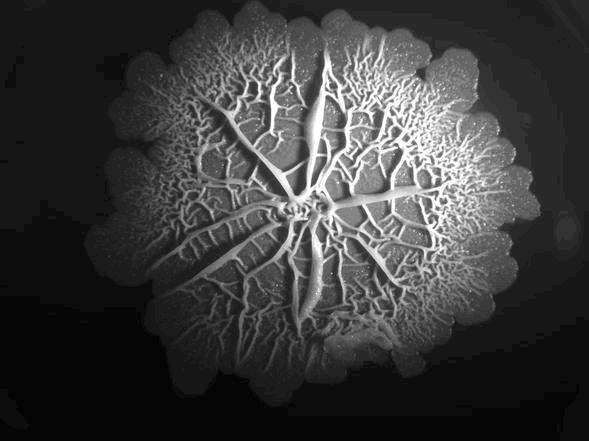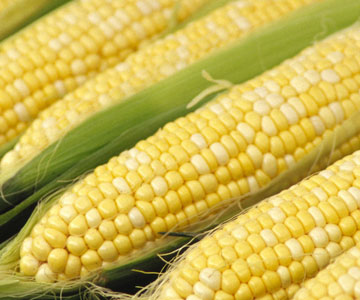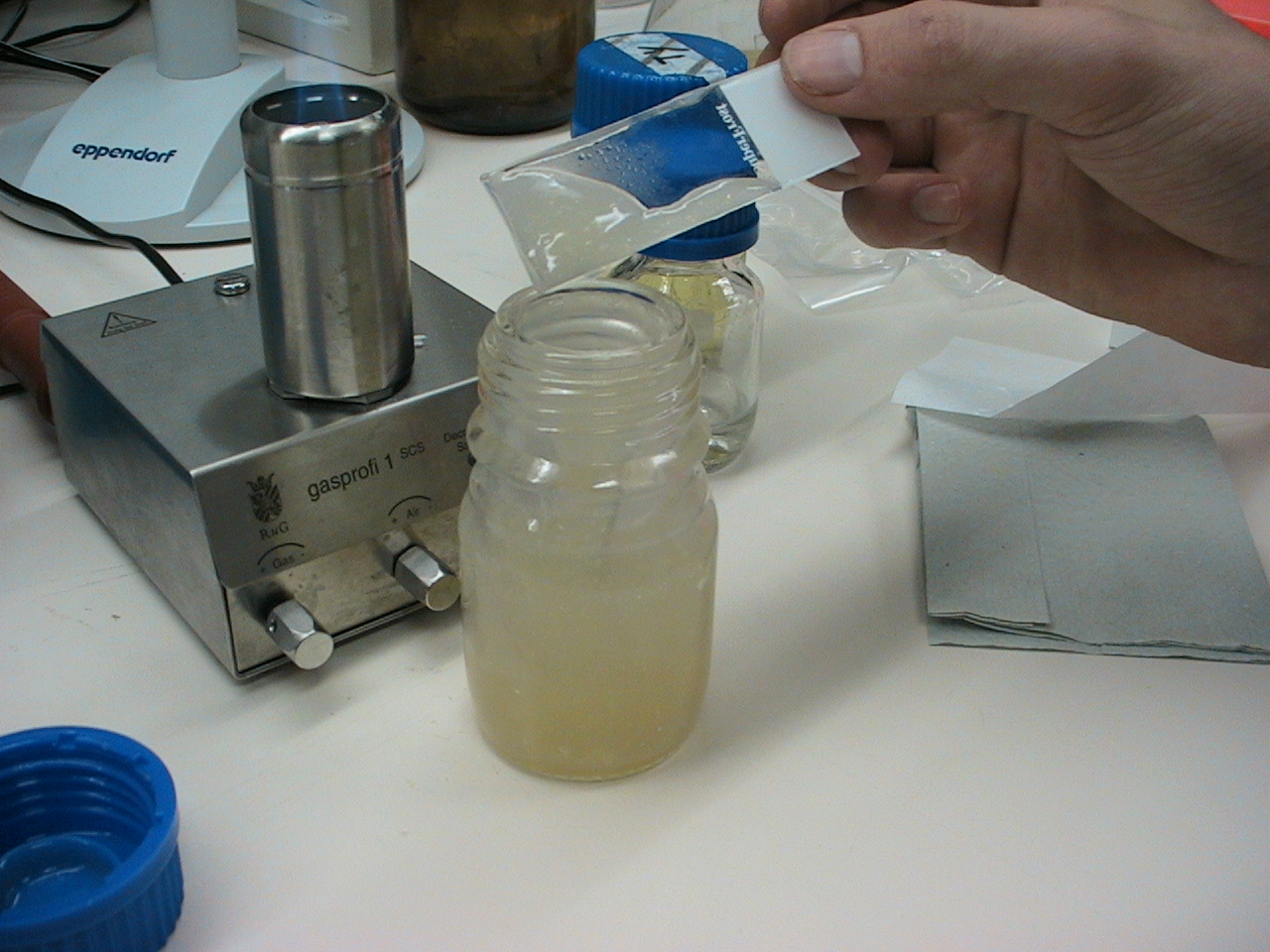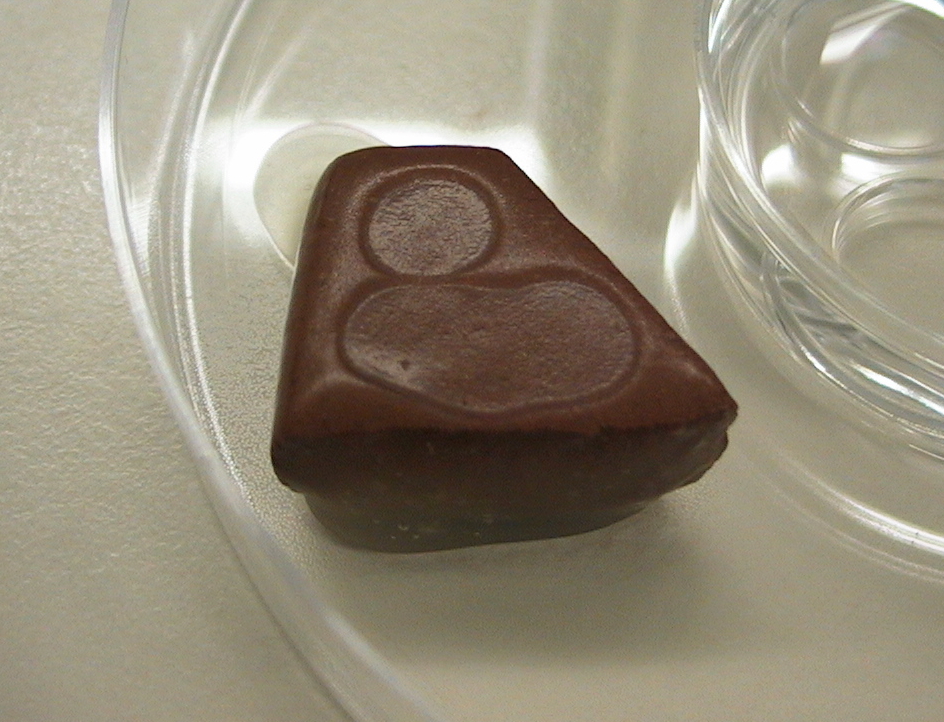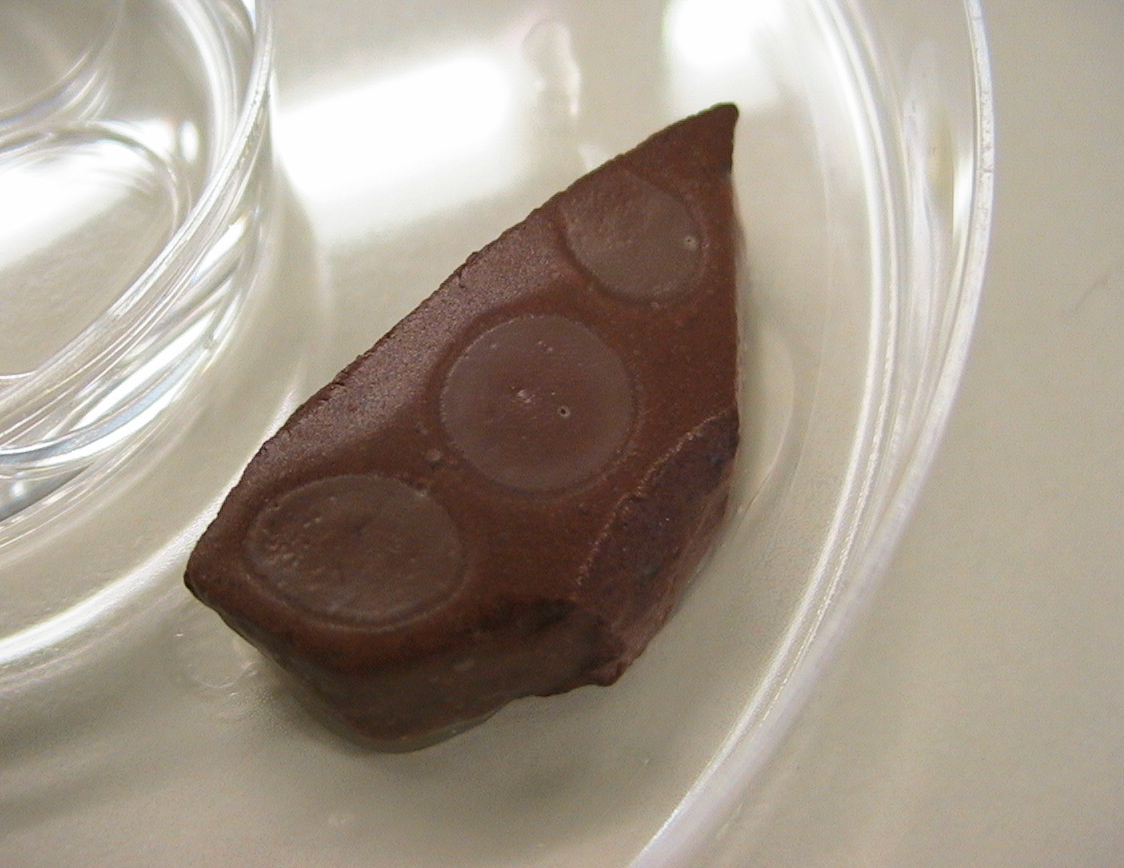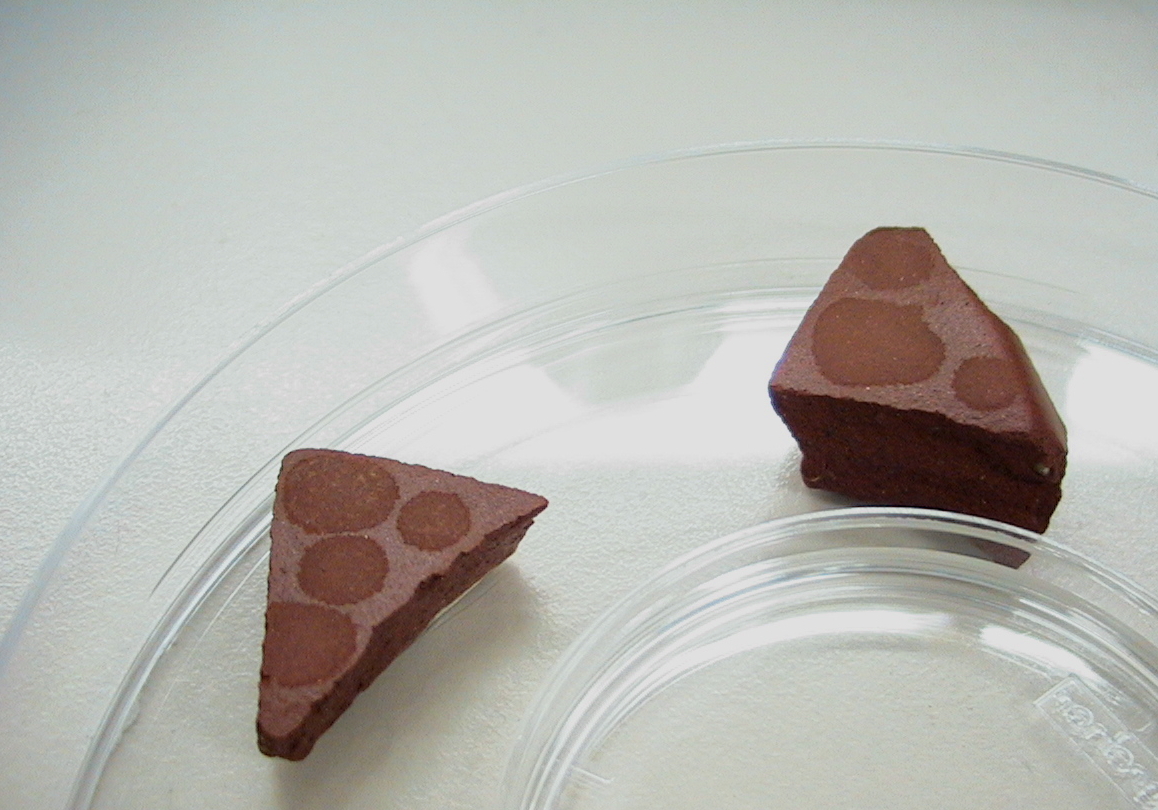Team:Groningen/Biofilm
From 2010.igem.org
(→Biofilm) |
(→Biofilm) |
||
| Line 20: | Line 20: | ||
'''Expression in a biofilm''' | '''Expression in a biofilm''' | ||
| - | To successfully auto induce expression of the chaplins in our biofilm, we have been studying relevant signaling pathways in ''Bacillus subtilis''. Timing is one the most important factors in successful expression. ''Bacillus'' produces amyloidfibers called TasA. TasA is a very important protein in biofilm formation in ''Bacillus subtilis''. TasA proteins form amyloid fibers thereby providing the biofilm with an increased degree of rigidity[[article tasA]]. Since chaplins also assemble into amyloid fibers, expressing chaplins at the same moment as TasA is expressed would maximize the chance of successful expression of chaplins while enabling maximum biofilm coverage. Expression of TasA is initiated via quorum sensing, key signaling molecules in this pathway are the Comx, SrfA and YqxM. | + | [[Image:pathway comxGR.jpg]]To successfully auto induce expression of the chaplins in our biofilm, we have been studying relevant signaling pathways in ''Bacillus subtilis''. Timing is one the most important factors in successful expression. ''Bacillus'' produces amyloidfibers called TasA. TasA is a very important protein in biofilm formation in ''Bacillus subtilis''. TasA proteins form amyloid fibers thereby providing the biofilm with an increased degree of rigidity[[article tasA]]. Since chaplins also assemble into amyloid fibers, expressing chaplins at the same moment as TasA is expressed would maximize the chance of successful expression of chaplins while enabling maximum biofilm coverage. Expression of TasA is initiated via quorum sensing, key signaling molecules in this pathway are the Comx, SrfA and YqxM. |
Revision as of 19:11, 24 October 2010
Biofilm
A hydrophobic biofilm coating could be applied in wide range of fields, such as antifouling and protection of sensory or medical equipment. Hydrophobicity can prevent micro-organisms and spores from adhering to a surface, thereby preventing fouling and corrosion to occur. This effect can be used in antifouling coatings for ships, but also in biomedical technology to prevent bacteria from forming pathogenic bioflms on prostheses and catheters. Bacillus subtilis a an ideal candidate for a biofilm coating since it is fast growing and has a relatively rigid extracellular matrix. Besides this, Bacillus also is a gram positive bacterium just like Streptomyces, this might be an advantage when expressing chaplins.
Biology
In nature, bacteria occur predominantly in highly organized multicellular communities called biofilms. Biofilm formation induces a complex developmental process, where cells differ from each other spatially and morphologically. The bacterial cells in such biofilms are composed of phenotypically different bacteria, demonstrating an intriguing example of heterogeneous regulation within an isogenic culture. Gram-positive bacteria have developed different strategies for survival in unfavorable environments, e.g. by getting competent or by sporulating. Biofilms offer an opportunity for the cells to survive extreme conditions as the cells in biofilms are more resistant to antibiotics and harsh circumstances. Micro-organisms form these complex structures to be better protected against physical stress, drought and competing organisms. Bacillus even forms highly complex biofilms with a large degree of structural complexity and diversification of cell function within the biofilm. There are even channels within the biofilm to allow drainage of bacterial wastes and diffusion of oxygen deep within the biofilmarticle Akos.
Biofilm formation
Biofilm formation usually starts with the accumulation of biomass, next there is the adhesion to a surface by the production of (adhesion proteins).
Since the pathways involved in biofilm formation in Bacillus are just starting to be unraveled, not everything is known about the complex physiological interactions within a biofilm. By using an already in Bacillus existing pathway for auto-inducting of our hydrophobic proteins, we try to minimize the amount of tinkering to the existing signaling pathways. Thereby leaving the natural system intact.

Expression in a biofilm
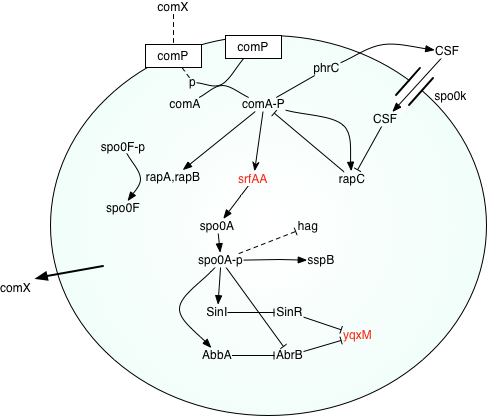 To successfully auto induce expression of the chaplins in our biofilm, we have been studying relevant signaling pathways in Bacillus subtilis. Timing is one the most important factors in successful expression. Bacillus produces amyloidfibers called TasA. TasA is a very important protein in biofilm formation in Bacillus subtilis. TasA proteins form amyloid fibers thereby providing the biofilm with an increased degree of rigidityarticle tasA. Since chaplins also assemble into amyloid fibers, expressing chaplins at the same moment as TasA is expressed would maximize the chance of successful expression of chaplins while enabling maximum biofilm coverage. Expression of TasA is initiated via quorum sensing, key signaling molecules in this pathway are the Comx, SrfA and YqxM.
To successfully auto induce expression of the chaplins in our biofilm, we have been studying relevant signaling pathways in Bacillus subtilis. Timing is one the most important factors in successful expression. Bacillus produces amyloidfibers called TasA. TasA is a very important protein in biofilm formation in Bacillus subtilis. TasA proteins form amyloid fibers thereby providing the biofilm with an increased degree of rigidityarticle tasA. Since chaplins also assemble into amyloid fibers, expressing chaplins at the same moment as TasA is expressed would maximize the chance of successful expression of chaplins while enabling maximum biofilm coverage. Expression of TasA is initiated via quorum sensing, key signaling molecules in this pathway are the Comx, SrfA and YqxM.
Coating surfaces
Making a viscous medium paste could either be sprayed or smeared on a surface, by adding corn starch to regular TY medium we increased the viscosity of our medium and also making more rich in nutrients. The result was a By experimenting with different ration of corn starch and agar.
Biofilm paste
Making a viscous medium paste could either be spayed or smeared on a surface, by adding corn starch to regular medium, we have created an easily applicable paste, so to grow our biofilmcoating on all kinds of different surfaces. Another effect of the addition of cornstarch to the medium is an increased growing speed.
 "
"
